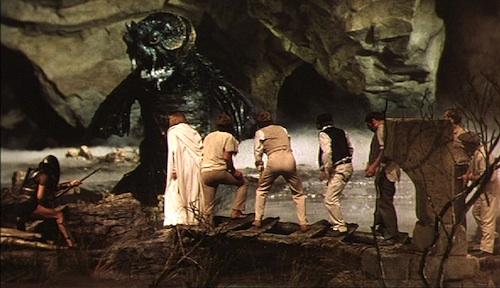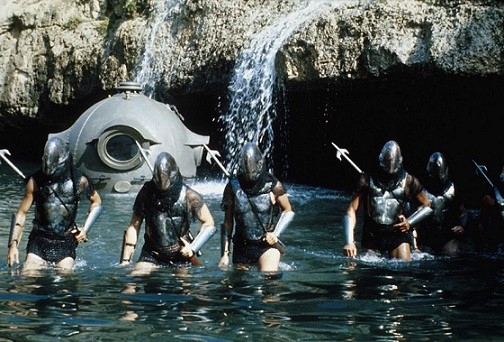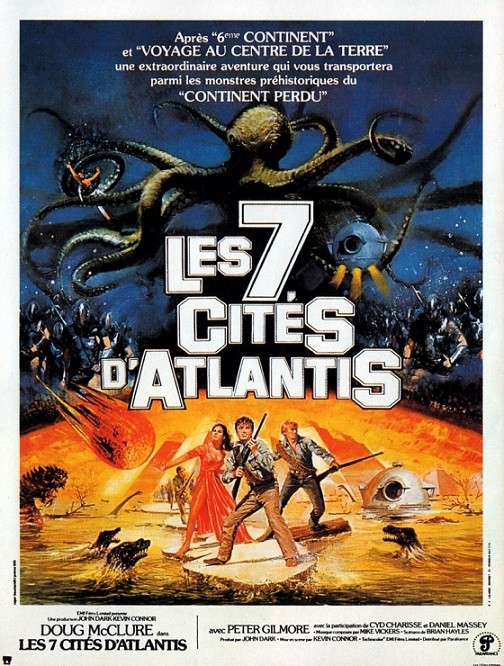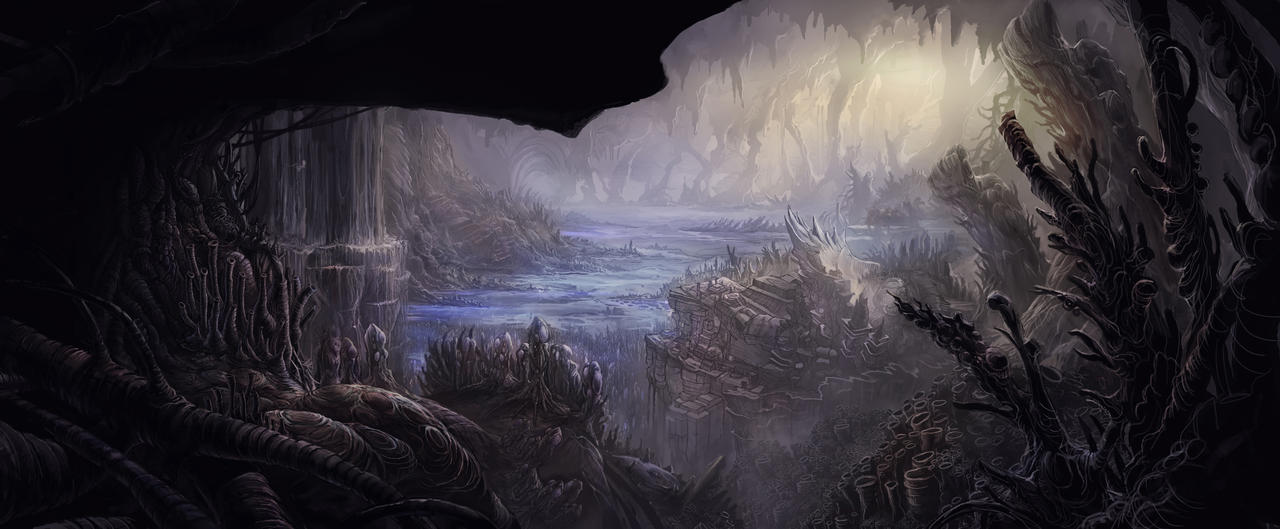Blue Planet Player’s Guide Revised, First Impressions
Posted: August 29, 2012 by
pointyman2000 in
Articles,
Blue Planet,
First Impressions,
Roleplaying Games

Stop! Or my orca will shoot!
Blue Planet is one of those games that presents a unique and intriguing setting that is a goldmine for stories. Having returned to active circulation in print and PDF format from FASA, Blue Planet is a sci-fi roleplaying game that takes place in an alien waterworld known as Posiedon.
Posiedon is a new frontier for mankind, who has long ago reduced Earth to a wasteland of pollution and urban decay. The discovery of a habitable planet of unspoiled natural resources was a siren song for many, resulting in an exodus of people seeking second chances, or corporations hoping to get the spoils first.
But aside from the frontier angle, Blue Planet’s setting also presents a transhuman society, one where being human is just one choice among many. Among the options for player characters are Modis (modified humans) Genies (Genetically modified humans), Aquaforms (Diver and Squid types), Hybrids (Cat and Silva types), Spacers, Transhumans (also known as Alphas) and two forms of uplifted cetaceans in the form of Dolphins and Orcas.
Aside from the remarkably large spread of “racial” choices, Blue Planet cleaves towards the sandbox style of play and gives a host of professional backgrounds and archetypes to choose from, ranging from Rockstar (leading to Silver Countess’ idea of playing an underwater Lin Minmei with an Orca bodyguard) to mercenaries and commandos. Blue Planet can get pretty confusing if the GM doesn’t take the reins of a campaign and specify exactly what he wants to run. Otherwise you’ll end up with a mess in character creation where everyone is playing something possibly incompatible with everyone else in the team.
Blue Planet runs on what they call the Synergy System. The basics should be familiar to old hands at the game. For those unfamiliar with it, the player rolls a number of ten-sided dice equal to the character’s rank in an Aptitude, which can range from Average (1 die) to Superior (3 dice). These dice are then compared to a Target Number set by the character’s Skill + Attribute scores. Dice which roll under the Target Number are considered successful, and the highest rolling successful die is used to determine the Action Value of the roll. Should all the dice roll above the Target Number, then the Action Value is determined using the lowest scoring die, resulting in a negative Action Value.
Combat in Blue Planet is pretty crunchy. Closer to HERO crunchy than Exalted 2nd edition crunchy, which is a good thing in my book. I’ve yet to go over it all with the same scrutiny of a Let’s Study article, but it does look pretty beefy. Combat maneuvers, initiative that takes into account the delay of performing certain actions and check this: Psychological (social) combat. So yes, fast-talking Con-Dolphin trying to get an Orca to let him through into a corporate compound, Blue Planet has rules for that.
The Blue Planet Player’s Guide Revised also sports pretty much the entire contents of the 2nd edition’s book on technology. There’s a huge chunk of the book dedicated to the wonderful toys of Poseidon, including SASER weaponry (like Lasers, but with sonics!) and mini-torpedo launchers. There’s certainly a lot of technology in this setting and I feel just a little guilty about going over the tech chapter with the enthusiasm that I did.
Overall I’m pretty impressed with what I see so far in Blue Planet. For people like me who weren’t able to snag a copy of the 2nd edition, this is a great chance to get back into this interesting setting. My only hope is that they bring out the supplements soon. I hear First Colony was a great setting book, and as is the corebook does feel like it needs a little more beefing up in terms of what a city would be like in Poseidon.








![Glory to Codexia! [2012] Codex 2012](/forums/smiles/campaign_tags/campaign_slushfund2012.png)













